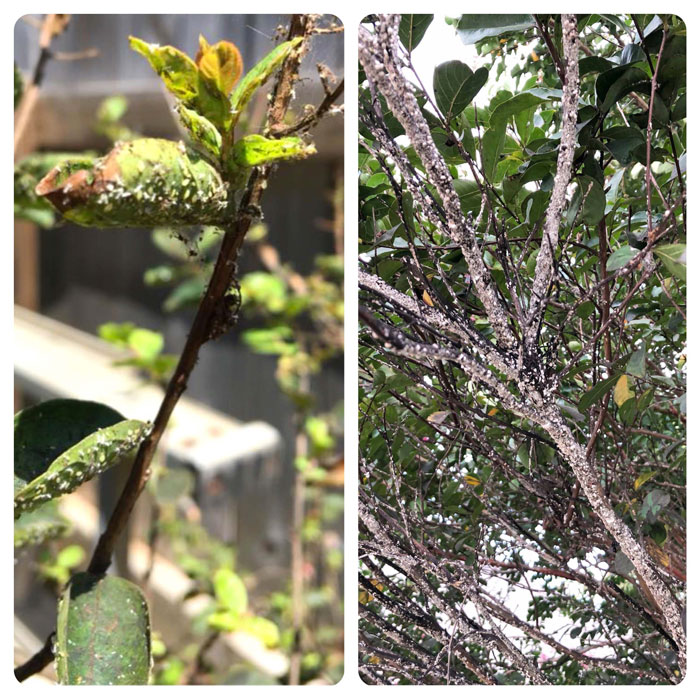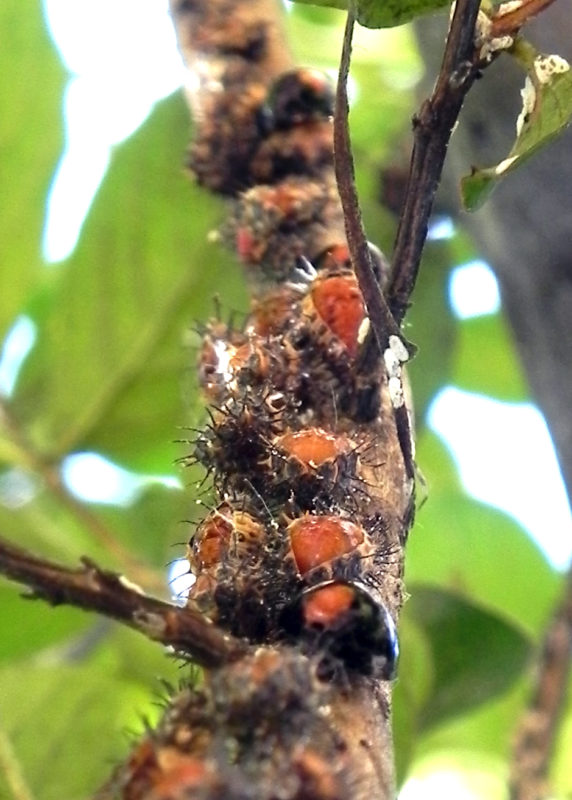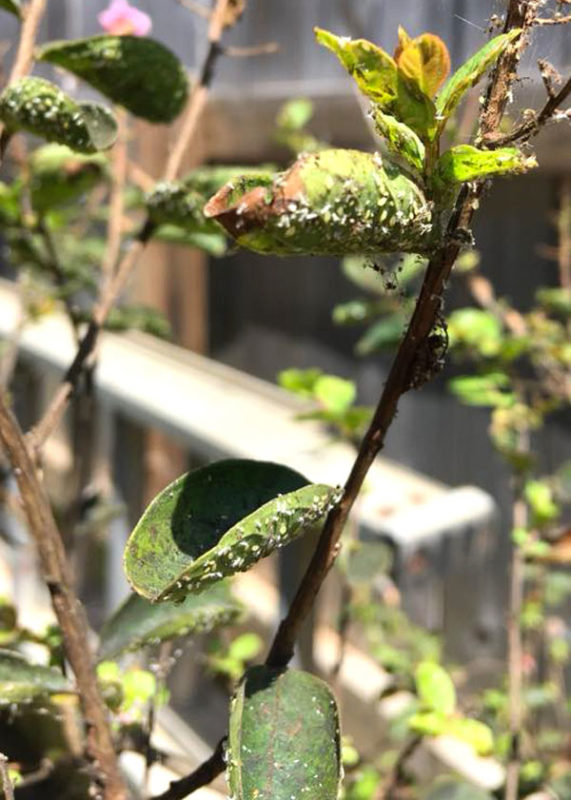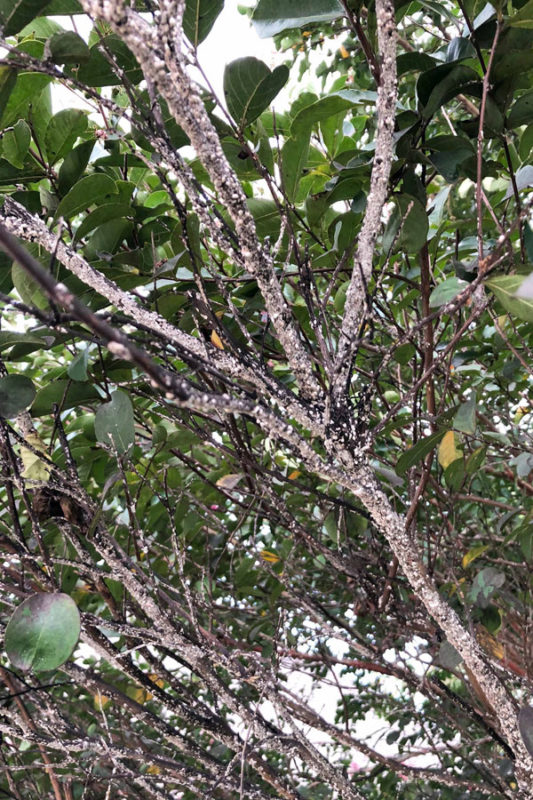Question of the Week Number 2: July 22, 2021
“What’s wrong with my crape myrtles?”

Crape myrtle aphids…
• Masses of BB-sized pests congregate on buds and tender new growth.
• Adults will be pear-shaped with twin “exhaust pipes” extending out beside their bodies. They do not fly.
• Populations can increase rapidly as mating is not required. Females give birth to living young.
• Exude sticky honeydew sap as they feed. You will notice fine mist of those drips as they fall. They will coat lower surfaces creating a sticky mess.
• Spiders will build nests in the branching to capture aphids and other insects.
• Can be controlled to some degree by hitting the plants with a hard stream of water.
• Easily controlled with general-purpose insecticides, either as contact sprays or as systemics. Systemic types, however, require 2-3 weeks of lead time to be taken into the plants.
Crape myrtle scales…
• First reported in U.S. in Richardson TX in 2004. Was primarily in DFW for several years but now has spread across the South.
• The actual scale insects are white, like large mealy bugs. They exude red fluids when pressed.
• They over-winter in crevices in bark and develop in spring and summer.
• My personal observation has been that they have been (with localized exceptions) much worse in very wet springs and early summers (2007 being the worst year, followed by 2015).
• As with aphids, they create a sticky honeydew exudate that coats leaves, stems and other surfaces below.

Help flies in on ladybug wings…
• As the scale populations are building up, you may also see a rapid increase in populations of ladybugs, specifically the twice-stabbed ladybug, so named because of its black wings with two orange-red dots on its back. These beneficial predators are voracious eaters and can completely consume the scale population if left on their own. Dead scales’ remains will be dry and flaky with no red fluids present.
Note on black sooty mold…
Sooty mold fungus will grow in the honeydew exudate of both of these insects. It is essentially harmless, but it’s really unsightly. Your best means of dealing with it is to control the insects before they live long enough to create the honeydew mess.
The systemic insecticide Imidacloprid applied as a soil drench in mid-May has shown the best results in preventing these pests, but do not apply if you see ladybug larvae present.
Note, too, that a major multi-state research project is underway. More than a dozen southern universities have banded together to study this introduced pest and how best to cope with it.


